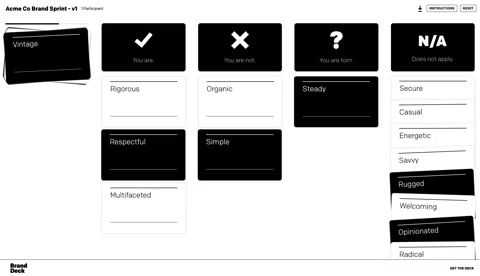
October 12, 2022
Throwing Books
My first job out of college was as a middle school history teacher. I didn’t have any formal training in teaching outside of a crash course and a three-week summer school stint. And so I did what most early professionals would do – I asked others how to be successful. The advice was varied, to say the least:
“Call out every single behavioral infraction. Don’t let anything slide.”
“Don’t smile until Winter Break.”
“Throw a book.”

I Tried All of It...
And, I failed. I failed miserably. Students talked over my lessons, I couldn’t figure out a fluid system for homework accountability, and in a moment of chaotic hilarity, two students arguing over a pen snapped it in half, drenching another student in blue ink.
I yelled. I tried revoking privileges. I put on my scariest teacher face. But I still wasn’t creating the type of classroom environment I knew my students needed. And after some serious (and painful) reflection, I noticed a trend: none of those actions were authentic to me.
I Was Stuck
I knew I was doing something good. I mean, I was trying to teach future generations of thinkers and doers! And I would do anything to get better, even if those actions were incongruent with who I was. Thankfully, a much more experienced teacher at my school saw me flailing and asked a simple question: “When do you feel the most yourself?”
For me, it was two-sided: when I’m performing and when I’m in relationship with people.
He told me to bring that to my teaching.
Starting Over
I went back to the drawing board. I opened my door before school and after lunch and told my students they were welcome to pop in, uninvited and unannounced. And slowly, they started trickling in. I’d listen as they told me about their lives outside of school, what they cared about, and their dreams for the future. From those conversations, trust was established, and over time, respect. That respect, rooted in relationship, meant they were more likely to pay attention in class, to listen when I asked them to do (or not do) something, and to invest more deeply in their own learning.
Then, I began turning my lessons into interactive experiences where we acted out parts of history rather than simply reading about them. I used film, music, and theater to teach from differing perspectives. We discussed what it would feel like to actually live in and observe particular periods of human history.
Conform vs Create
Oftentimes, when we start in a new company or role, we’re inundated with messages about how to be successful in the position: the skill sets, mindsets, and personality traits necessary to adapt to a particular culture and carve a pathway to success. We’re driven by success and immediate rewards, so we adapt. And, in extreme cases, we conform. Although this may be doable — even helpful — for a while, it’s not sustainable. It can begin to chip away at our core identity. And it certainly doesn’t make for a fulfilling career.
Change From Within
At Ei, we work with individuals all the time who are trying to bridge the gap between who they are and how they show up at work. And we start with a similar question: “How do you want to be perceived?”
To help people answer, we designed a team experience with Brand Deck which guides individuals through a process to identify the core attributes for which they want to be known. Then, we help them consider which of these attributes are current and which are aspirational; which will help them get where they’re trying to go. It’s a practice we invite people to do annually, as they and the situations, scenarios, and challenges around them change.

Who Are You?
Experience often teaches us that the only way to find sustainability in our careers is to show up as ourselves. And yet, “showing up as oneself” is increasingly more challenging with a constant barrage of voices and seemingly endless external pressures.
As a leader, are you able to pause and check in with yourself? And are you paving a path for your team to do the same – helping them find avenues to define who they are in the role? And to highlight their unique skill sets, backgrounds, personalities?
After all, throwing books doesn’t actually work for…most people.
The Spark You’ve Been Looking For
Visit our store to find award-winning education tools used by individuals and teams around the world.




